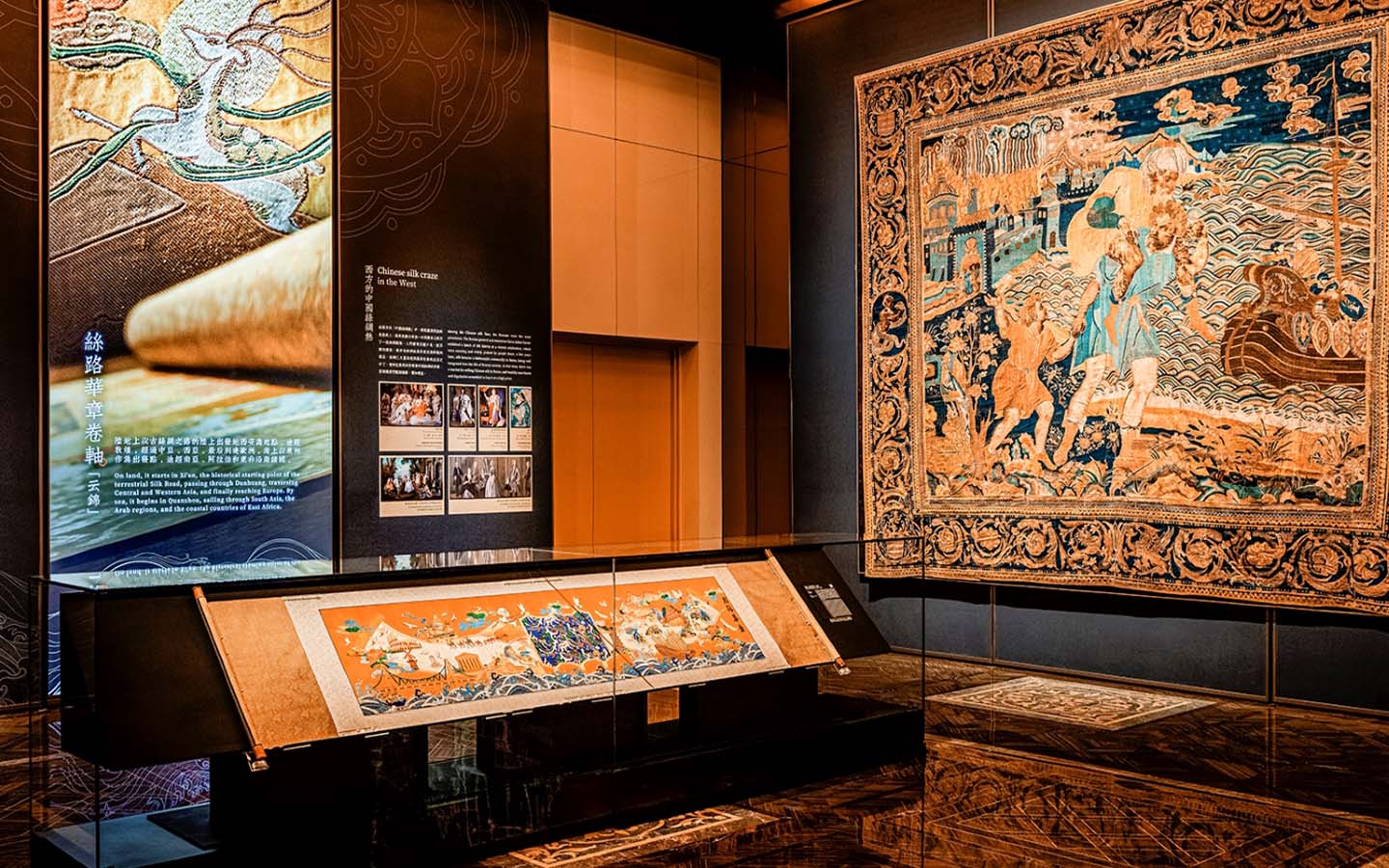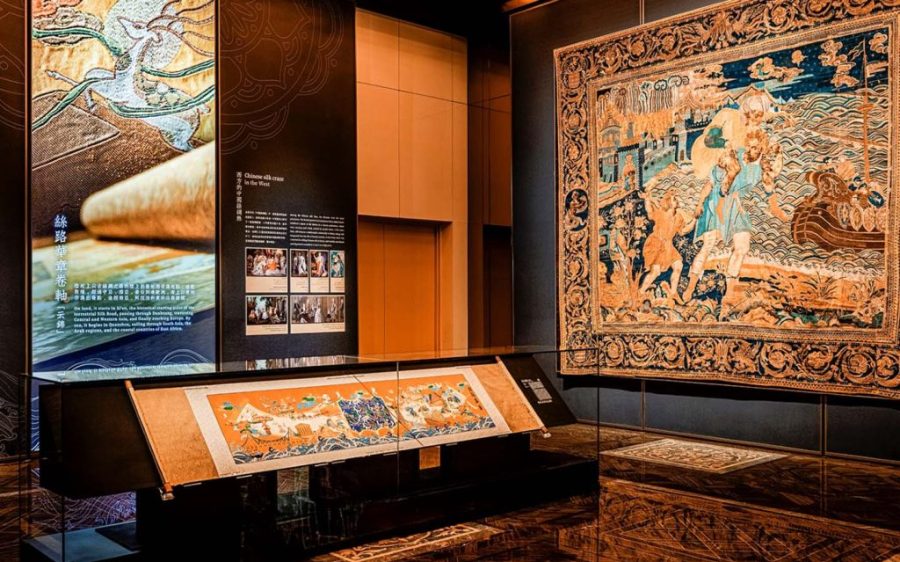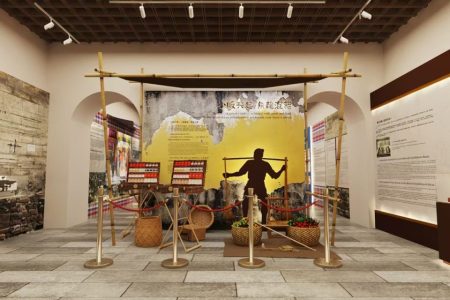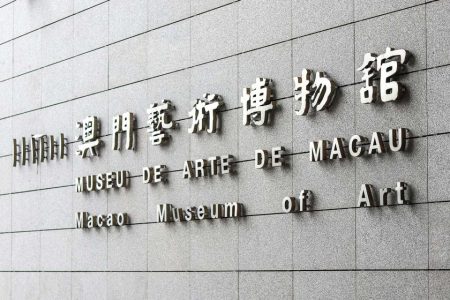The inaugural exhibition of The Maritime Silk Road at the Poly MGM Museum concludes this month after dazzling visitors since last November. According to the website, the gallery plans to unveil new items that accentuates the historical trading linkages with the West, though no other formal announcements have been made at this moment.
The more than 200 artefacts currently on display narrate the maritime connections between southern Chinese ports and distant shores across Asia, Europe, and beyond. Alongside sought-after porcelain, silk, and silver that passed through the enclave of Macao came herbs, spices, and culinary approaches that would go on to shape the city’s flavour profile in ways that are still evident today.
Just inside the atrium, interactive LED screens draw in the initial foot traffic before crowds shuffle towards four zodiac heads once housed inside Beijing’s Old Summer Palace. Remnants of Macao’s maritime contributions are also evident. Old pictures of the Praia Grande come into view as does a comment regarding the city’s shipbuilding heritage. But perhaps the most Macao relic of the exhibition goes unnoticed, camouflaged into the back wall showcasing nothing historically visible about the peninsula.
It is an early 17th-century tapestry featuring the Trojan prince Aeneas carrying his father Anchises from the burning city of Troy after Greek soldiers attack the city. The textile’s clouds and waves are said to be depicted in an Asian style, blending both Eastern and Western artistic influences. The work compliments other examples throughout Macao that feature this artistic blend. On top of Guia Hill, for example, the walls inside the chapel have frescos of Chinese lions next to Christian figures.
The links to Macao are through its previous owner. The tapestry is said to have been made for Francisco Mascarenhas, the first governor of Macao, though the adjacent plaque hedges this claim. Regardless, Mascarenhas’s time was marked by conflicting worldviews that were heightened among the diverse religious and national identities concentrated inside Macao.
[See more: Roger Crowley’s Spice is a must read for lovers of Macao history]
When Mascarenhas arrived in the spring of 1623, only months had passed since Macao successfully defended itself against a Dutch landing. The city was a coveted location, strategically linking the trading ports of Malacca, Manila, and Nagasaki, key harbors along the maritime Silk Road that enriched those participating. It was an open secret that Macao was poorly equipped to defend itself against foreign aggressors, attracting unwelcome attention that ultimately triggered the Dutch offensive.
Mascarenhas addressed these issues. He constructed a wall along the western peninsula and established a foundry that would manufacture cannons that would defend the city. But the governor also fought internal battles. Appointed by the Viceroy of Goa, Mascarenhas was poorly received, landing amid the eight-decade period when Portugal and Spain shared the same crown and deepening divisions between rival Iberians living at Macao.
The Senate saw him as a threat to its authority. Mascarenhas was a disruptor of the status quo, harassing the Chinese officials who effectively controlled the city’s food supply by their management of the border gates. The governor was also viewed as a sympathizer to the Dominican order, which irritated the Jesuits. Bullets were even fired at St. Augustine’s seminary, where he was staying, damaging the walls. Yet, despite all this, Mascarenhas would have his revenge.
Lessons from the Trojan War in Macao
Mascarenhas became the first governor to reside at Mount Fortress, not by decree, but by trickery. Adjacent to the Church of Mater Dei, known today as the Ruins of St. Paul’s, the compound was initially used by the Jesuits. Given its strategic location, the site attracted the governor’s attention. Amid the feud, Mascarenhas arrived at the fortress under false pretenses, convincing the order that he sought to mend fractured relations. The governor entered the garrison, but by the end of the day, the Jesuits were evicted, a maneuver that somewhat echoes the myth of the Trojan Horse, perhaps a strategy that was inspired by the tapestry that now hangs inside the exhibition hall.
Identifying the true reason why Mascarenhas commissioned multiple tapestries from the Story of Troy is beyond the expertise of this writer. Unlike Troy, Macao managed to defend itself against the Dutch. There may have been a patriotic connection to the tapestry’s depiction of Aeneas, son of Venus, the goddess of love who appears in Luís de Camões’ Os Lusíadas as the spiritual protector for Vasco da Gama’s 15th-century journey to India. But that is admittedly speculation.
[See more: Unveiling hidden histories: American traders’ glimpses into old Macao]
For at least the remainder of the month, visitors can look upon an item that was once owned by a historically important, but also controversial, figure of Macao. Francisco Mascarenhas’s Macao story goes untold in the current exhibition, though the tapestry links the SAR with the artworld of America and Europe, where other tapestries featuring the Story of Troy are shown inside museums in New York and France. The textile is a historical treasure, valued for those that know the governor’s saga, and an example that the best treasures are sometimes hanging out in the corner, waiting to be discovered.






